The week at a glance
- Pied-billed Grebe still in Greater Manchester
- Green Heron still in Cornwall
- American Coot in Co Mayo
- Ross's Gull in Argyll
- Buff-bellied Pipits in Co Waterford and Co Mayo
- American Robin in Devon
- House Crow still in Co Cork
It certainly feels a lot more like winter now, and this shortened review certainly reflects that. But the new arrivals still didn't lack quality, and the week still produced a few surprises.
While the Green Heron remained at the Lost Gardens of Heligan and the photogenic Pied-billed Grebe was at Hollingworth Lake (Manchester) all week, there was plenty of other Nearctic interest. Most notable was the arrival of yet another waterbird from the west which again forced some to make the journey across the Irish Sea. Ireland's second American Coot was found at Termoncarragh Loch (Co Mayo) on 15th, staying to the week's end. This is the tenth record for Britain & Ireland, with the last being a returning bird (possibly for its third year) at Loch of Benston (Shetland) in 2005.
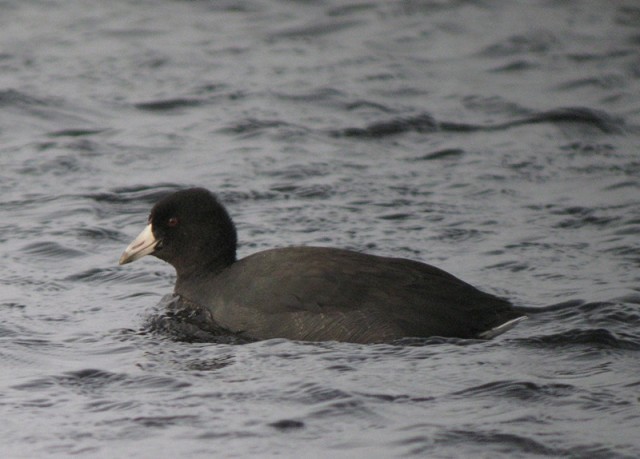
American Coot, Termoncarragh Loch, Mayo (Photo: Dermot Breen)
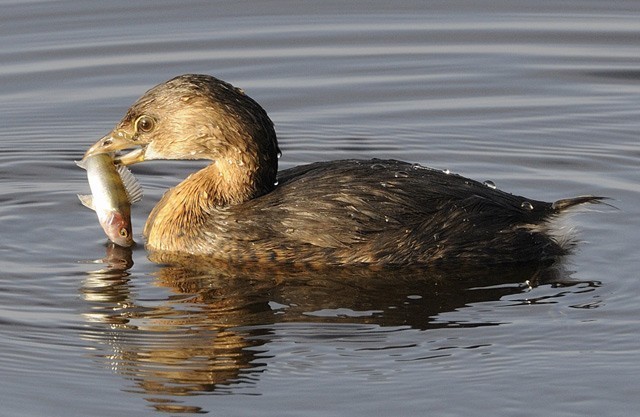
Pied-billed Grebe, Hollingworth Lake CP, Greater Manchester (Photo: Mike Lawrence)
To break up the dominance of Nearctic arrivals, there was a brief fly-by Ross's Gull past Uisaed Point (Argyll) on 12th. This is actually the fourth record for Argyll, following two in 2006 and the first in 1976.

Ross's Gull, Machrihanish (village), Argyll (Photo: Eddie Maguire)
Back in Ireland, the Buff-bellied Pipit remained on Clonea Stand (Co Waterford) to at least 15th and incredibly yet another was found, this time at Belmullet (Co Mayo) on 15th–16th. Add to this the American Robin that remained at Turf (Devon) all week and this is a great late autumn period. Not so good, though, was the clamping of various birders' cars at the American Robin, although parking was always going to be a problem here.
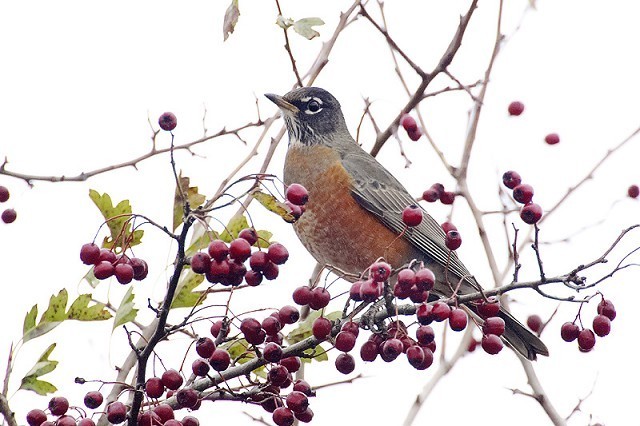
American Robin, Turf, Devon (Photo: John Lee)
Last but not least, the House Crow remained at Cobh (Co Cork) to at least 14th.
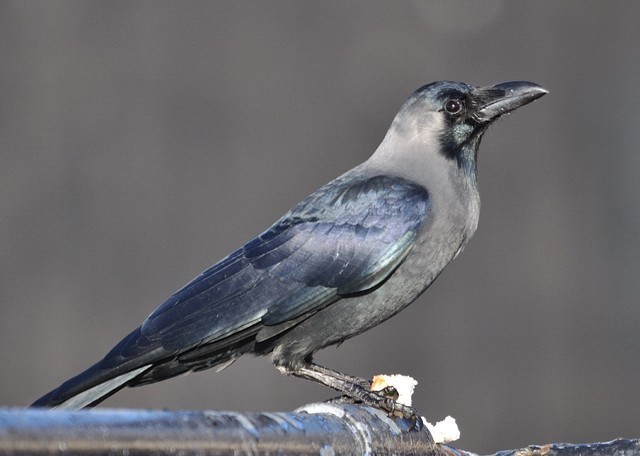
House Crow, Cobh, Cork (Photo: Ronan McLaughlin)
The suitably wintry Snow Goose remained on Shetland, at Maywick on 16th, with others at Great Broughton (North Yorkshire) and Craobh Haven (Argyll) on 13th, The Mullet (Co Mayo) on 15th and Marwick (Orkney) on 16th. There was also some confusion over the identity of a white goose in the northeast, with reports from Wooler and Doddington (Northumberland) and Greenlaw Moor (Borders) possibly all relating to a single Ross's Goose. Other Ross's were at Browhouses (Dumfries & Galloway) on 12th and Rockcliffe Marsh (Cumbria) on 13th.
Up to two Black Brants were again reported from the Wells-next-the-Sea (Norfolk) area to 15th, with two also at Ferrybridge (Dorset) to 13th. Other singletons were at Pagham Harbour (West Sussex), Sturt Pond (Hampshire), Frampton Marsh (Lincolnshire) and Harty Ferry (Kent).
The only Ferruginous Ducks were one again at Corbet Lough (Co Down) on 17th and the obligatory couple at Chew Valley Lake (Somerset). The drake Ring-necked Duck also remained there to 16th, with others at Llyn Pencarreg Carmarthen) to 14th and new birds at Loughrea (Co Galway), Bardney Pits (Lincolnshire), Cork City (Co Cork) and Loch Calder (Highland). Drake Green-winged Teal remained at Rutland Water to 14th, Caerlaverock (Dumfries & Galloway) to 16th and Loch a'Phuill, Tiree (Argyll) to 16th, with new arrivals at Loch Stiapavat, Lewis (Outer Hebrides) on 11th and Cresswell Pond (Northumberland) on 14th–15th. The only American Wigeon was a female reported at Welney (Norfolk) on 12th, and a rather unusual inland record was a drake Velvet Scoter at Island Barn Reservoir (Surrey) to 16th.

Green-winged Teal, Caerlaverock WWT, Dumfries & Galloway (Photo: Brian Henderson)
With the drake departed, the female Surf Scoter remained offshore at Ynyslas (Ceredigion) to 12th. Almost as predictable now as the Chew Fudge Duck, the eclipse drake King Eider was off the Suffolk coast to 16th, with the other drake still also at Burghead (Moray & Nairn) to 11th and the female at West Voe of Sumburgh (Shetland) to 16th. Also as might be expected, Smew were much more in evidence, with singletons at Hurworth Burn Reservoir (Durham), Seamer Carr (North Yorkshire), Titchwell (Norfolk), Nant-y-Ffrith Reservoir (Clwyd), Idle Valley (Nottinghamshire), Westwood Pool (Worcestershire), Far Ings (Lincolnshire), Rutland Water, Oare Marshes (Kent) and two at Crookfoot Reservoir (Cleveland) on 14th.

King Eider, Burghead, Moray & Nairn (Photo: Anne Wilkinson)
Seawatching was much quieter, with the only Sooty Shearwater being one hanging around Chichester Harbour (Hampshire) briefly on 11th. Cornwall continued to produce late Balearic Shearwaters, with four past Pendeen on 11th, along with a Grey Phalarope, and two past Porthgwarra on 14th.
The only reports of Glossy Ibis this week were of birds still at Welney (Norfolk) to 15th, on the Otter estuary and Exminster Marshes (Dorset) all week and one again at the Cotswold Water Park (Wiltshire) on 14th. Great White Egrets remained at Pitsford Reservoir (Northamptonshire) and Idle Valley (Nottinghamshire), with briefer birds at Alnwick (Northumberland) from 12th–14th, Bashall Town (Lancashire) on 14th, Kents Bank (Cumbria) on 15th, Dingle Marshes (Suffolk) on 16th and Worth Marsh (Kent) on 16th. Single Cattle Egrets remained at Donna Nook (Lincolnshire) to 12th and Guyhirn (Cambridgeshire) to 14th, with one-day birds at Ginst Point (Carmarthen), Saltholme (Cleveland) and Welney (Norfolk).

Great White Egret, Alnwick, Northumberland (Photo: Colin Pears)

Cattle Egret, Welney WWT, Norfolk (Photo: Jonathan Smith)
The Squacco Heron continued to please photographers at Angle Bay (Pembrokeshire) to 14th although sadly the bird at Morpeth (Northumberland) was found dead on 17th. It had been looking rather sickly for a while, so its demise was perhaps expected, but could/should it have been prevented? The specimen (such a horrible phrase for such a fine bird) was also rather contentiously retained and taken out of the county to be kept personally.
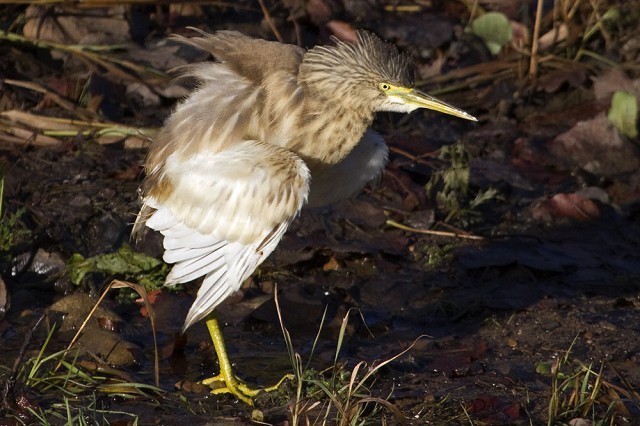
Squacco Heron, Morpeth, Northumberland (Photo: Tim Mason)
The east coast still hosted up to 17 Rough-legged Buzzards, with four in North Yorkshire, three in Lincolnshire and one or two birds at four sites in Norfolk. Others were in South and East Yorkshire, Essex, Kent, Cumbria and Cleveland. The Northern Harrier also remained at Tacumshin (Co Wexford) to at least 16th, with the mystery bird in Norfolk still remaining a mystery. It was seen again on 13th at Burnham Overy.

Rough-legged Buzzard, Bilsdale, North Yorkshire (Photo: Dave Bywater)
American Golden Plovers remained in the Cley/Blakeney area of Norfolk all week, at Eoropie, Lewis (Outer Hebrides) to 16th and at Port Nis, Lewis (Outer Hebrides) again on 12th; in Co Galway, the Ballyconneely bird relocated to Truska on 12th. One was also at Trevorian Pool (Cornwall) on 14th–16th, although a White-rumped Sandpiper there was later re-identified as a Curlew Sandpiper. A more genuine White-rumped Sand remained on Clonea Strand (Co Waterford) to 15th and the Semipalmated Sandpiper was at Ballycotton (Co Cork) to at least 16th. The roving Long-billed Dowitcher in Devon was at Colyford to 15th before moving back to Lodmoor on 16th.
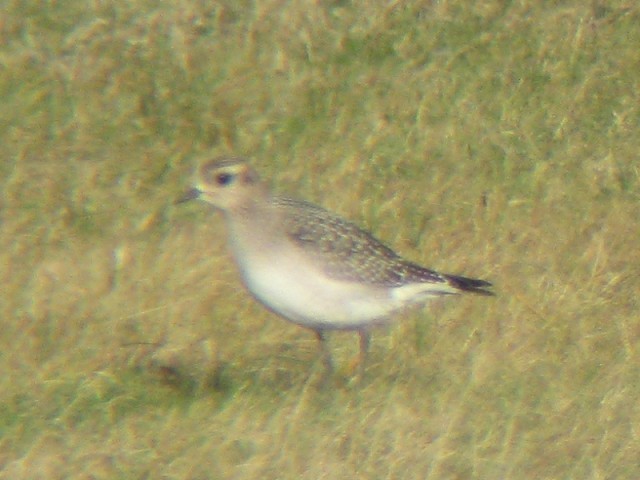
American Golden Plover, Truska, Galway (Photo: Dermot Breen)

White-rumped Sandpiper, Clonea, Waterford (Photo: Polina Kasapova)

Semipalmated Sandpiper, Ballycotton, Cork (Photo: Michael John O' Mahony)
Apart from two past Holy Island (Northumberland) on 11th, there were just single records of Grey Phalarope from 17 widespread locations, with the furthest north, and only Scottish record, being one at Bowmore, Islay (Argyll).

Grey Phalarope, Lytham Moss, Lancashire (Photo: Ivan Ellison)
There were just eight Glaucous Gulls and nine Iceland Gulls reported during the week, including one of the latter at Ditchford Gravel Pit (Northamptonshire) on 14th. Some of the long-staying Ring-billed Gulls remained, at Prescot Reservoir (Lancashire), Gosport (Hampshire), Oban and Dunbeg (Argyll), Nimmo's Pier (Co Galway), Westcliff-on-Sea (Essex) and Sandycove (Co Dublin). The adult also reappeared at Portrush (Co Antrim) on 17th. There were just two Sabine's Gulls reported during the week, past Selsey Bill (West Sussex) on 17th and one remained around Cobh (Co Cork) to 15th. Also in Ireland, the regular winter Forster's Tern returned to Co Galway: it was seen at Doorus on 13th.
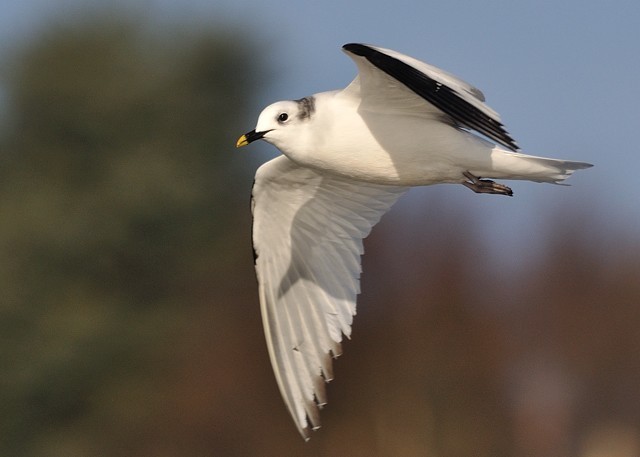
Sabine's Gull, Cobh, Cork (Photo: Ronan McLaughlin)
One last surprise of the autumn was a late Pallid Swift at Berry Head (Devon) on 17th, brightening the day after a disappointing morning's seawatching! Several now-resident groups of Shore Larks remained, with over 30 at Holkham Gap (Norfolk), 15 at Dunwich (Suffolk), 12 at Gibraltar Point (Lincolnshire) and 10 at John Muir Country Park (Lothian).
The relentless march of Waxwings continued, but progress into the southwest was still slow. This week's peak counts included 500 at Dalston (Cumbria), 500 in Edinburgh (Lothian), 350 in Kendal (Cumbria), 350 in Penrith (Cumbria), 270 in Dumfries, 250 in Glasgow (Clyde) and 220 in Irvine (Ayr). The Richard's Pipit remained on Matlock Moor (Derbyshire) to 14th, with the only others reported at Lendalfoot (Ayr) on 15th and Sennen (Cornwall) again on the same date. A rather surprising find was a Desert Wheatear at Seahouses (Northumberland) on 16th, originally reported on the BBC AutumnWatch blog. The Farnes warden was on hand on the jetty to check it out, and managed to refind the bird whilst phoning out negative news.

Desert Wheatear, Seahouses, Northumberland (Photo: Tom Tams)
Even so late in the autumn, there was still just one more Red-flanked Bluetail, although this was a belated report. A bird photographed on 7th November at Stanley Common (West Sussex) was the first record for the county.
The late Dusky Warbler remained on St Mary's (Scilly) to at least 15th and another very late Barred Warbler was at Fleetwood (Lancashire) on 15th. Two eastern Lesser Whitethroats also added interest, with the Desert Lesser Whitethroat at Sumburgh (Shetland) to 11th and a Central Asian Lesser Whitethroat at Grain (Kent) to 14th.
Only 11 Yellow-browed Warblers remained, including three in Devon and birds as far north as Sunderland (Durham) and Caerlaverock (Dumfries & Galloway). There were also far fewer Pallas's Warblers, with birds at Titchwell (Norfolk), Lowestoft and Gunton (Suffolk), Flamborough Head (East Yorkshire) and Gibraltar Point (Lincolnshire).
Around 25–30 Great Grey Shrikes remained across the country, with some birds ranging quite widely across sites. The only Northern Long-tailed Tits this week were three in Lowestoft (Suffolk) on 13th, but equally gleaming was an Arctic Redpoll at Strath Brora (Highland) on 13th. There was also an encouraging sign for southern birders with the appearance of another with 10 Mealy Redpolls, Siberian Chiffchaff and Firecrest at Woodwalton Fen (Cambridgeshire) on 13th. Back in Scotland, the only Serin was the bird still on Out Skerries all week.

Northern Long-tailed Tit, Lowestoft, Suffolk (Photo: Andrew Easton)

Serin, Out Skerries, Shetland (Photo: Dougie Preston)
Very few big groups of Lapland Buntings remain, aside from a group of 120 at Buckton (East Yorkshire); this week's other peak counts included 35 at Grimston (East Yorkshire), 15 at Milford-on-Sea (Hampshire) and 14 at Gibraltar Point (Lincolnshire). There was also another late Ortolan Bunting, this time on Skokholm (Pembrokeshire) on 15th.
Photo of the Week: 11th–17th November 2010
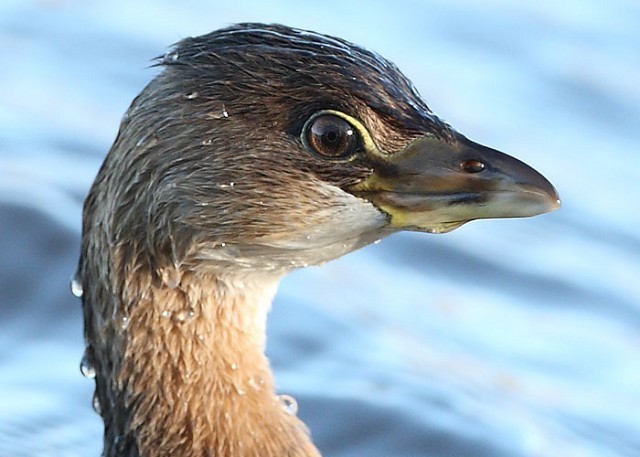
Pied-billed Grebe, Hollingworth Lake CP, Greater Manchester (Photo:
Gary Jenkins)
The arrival of the UK's first Pied-billed Grebe for a decade was bound to attract a lot of attention. The fact that it settled within an hour or two's driving time of a fifth of the UK population guaranteed that it would be a popular draw for people with all levels of birding interest. Needless to say, we've had some great photos uploaded, but most photographers have found it difficult to get close to the bird in good light. One photographer who obviously managed this was Gary Jenkins, as evidenced by his stunning close-up of the grebe's head in full sunlight, bringing out the warm browns of the plumage contrasted against the rich blue reflections of the sky in the water. Side lighting emphasises the shapes and textures, whilst the water droplets from the bird's last dive add interest. A perfect head angle — just slightly turned towards the camera — shows the classic profile of the subject (very different from any resident UK grebe species), whilst adding a greater sense of 'connection' with the viewer than a true side-on pose. Rarity, detail and aesthetics all in one image!
Other notable photos

Little Owl, undisclosed site, Worcestershire (Photo:
Mark Hancox)
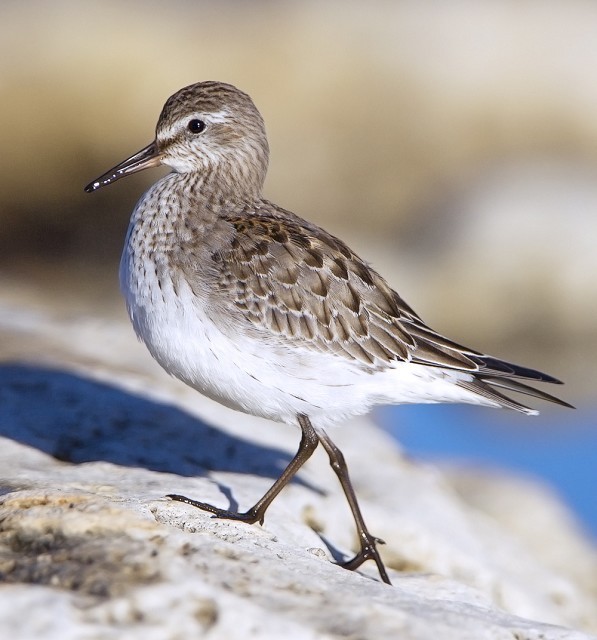
White-rumped Sandpiper, Clonea, Waterford (Photo:
Polina Kasapova)

Lilac-breasted Roller, Kenya (Photo:
Nigel Forrow)

Starling, undisclosed site, Lancashire (Photo:
Tom Charles)

Nuthatch, Baslow, Derbyshire (Photo:
Robert Askew)

Short-eared Owl, Worlaby Carrs, Lincolnshire (Photo:
Dean Eades)

Rook, Mold, Clwyd (Photo:
Richard Steel)

Peregrine Falcon, Caribbean Sea (Photo:
Steve Dolan)

Grey Plover, Snettisham RSPB, Norfolk (Photo:
Bryan Wright)

Yellowhammer, Doonfoot, Ayrshire (Photo:
Chas Moonie)

Barn Owl, Sunk Island, East Yorkshire (Photo:
David Constantine)
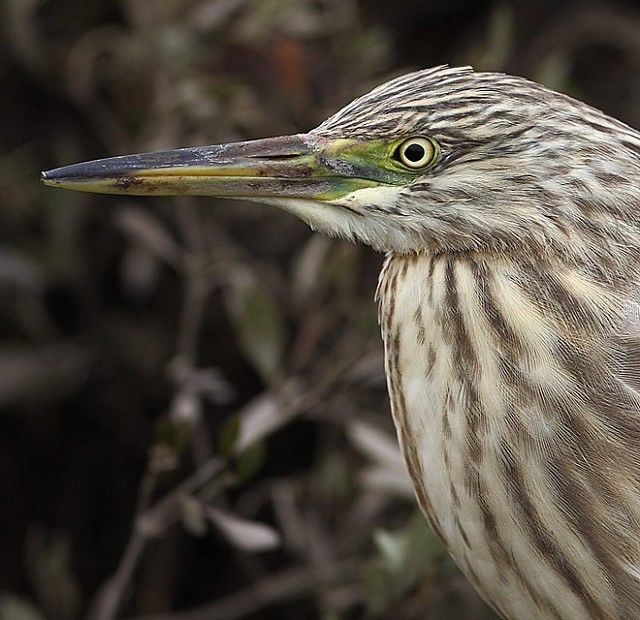
Squacco Heron, Angle Bay, Pembrokeshire (Photo:
James Packer)
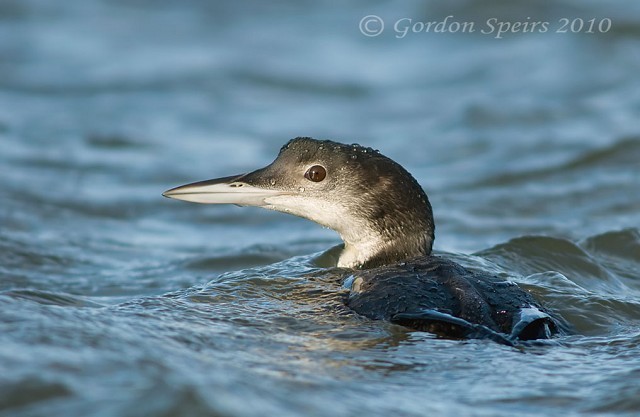
Great Northern Diver, Fleetwood, Lancashire (Photo:
Gordon Speirs)
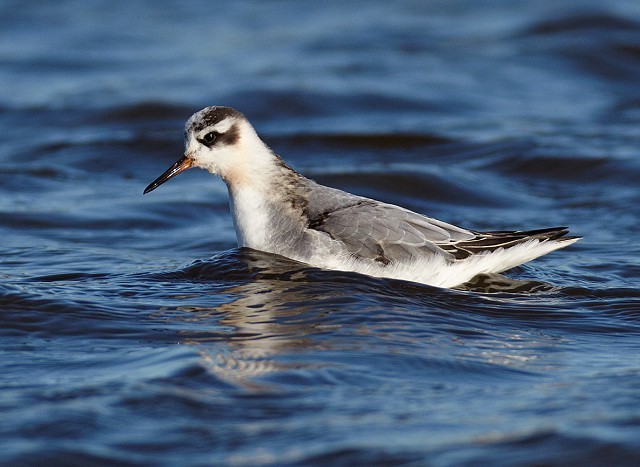
Grey Phalarope, Pennington Marshes, Hampshire (Photo:
Simon Johnson)

Purple Sandpiper, undisclosed site, Norfolk (Photo:
Nigel Pye)

Common Crossbill, Tholt-e-will Plantation, Isle of Man (Photo:
Sean Gray)

Hawfinch, Germany (Photo:
Siegbert Werner)

